During its history, Earth has endured many terrible devastation and left horrifying traces.
We can list, in chronological order, the most famous meteorite collisions in the history of the planet humans live on.
1. Vredefort Dome crater
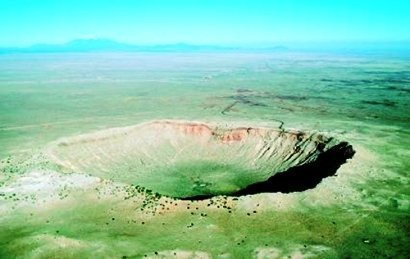
The oldest destruction of Earth by a meteorite occurred about 2 billion years ago, occurring in the Vredefort Dome area, southwest of Johannesburg, South Africa.This is considered the largest meteorite impact ever discovered with Earth. It was the result of the impact of a rock mass estimated to be 10 km in size and flying at a speed of about 36,000 km/h, leaving a crater about 300 km wide, called Vredefort Dome Crater.
According to scientists, this event happened when humans and most plants and animals had not yet appeared. The only living thing at that time was a type of algae similar to the green moss in the dams now.
2. The extinction of the dinosaurs
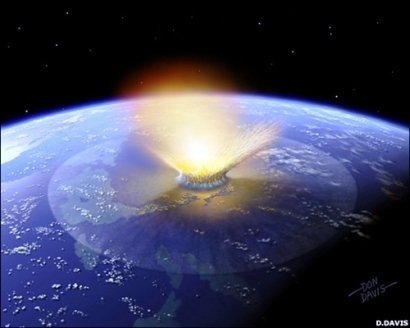 |
| Chicxulub crater off the coast of the Yucatan peninsula. Source: Howstuffworks. |
The largest known explosion on Earth that left behind complete biogeographic evidence is called the Cretaceous Extinction. The event occurred about 65 million years ago, causing the extinction of many species and especially the extinction of dinosaurs.
This event occurred when a meteorite collided with Earth, leaving behind the Chicxulub crater off the coast of the Yucatan Peninsula (Spanish: Península de Yucatán), located in southeastern Mexico.
The destructive power of the explosion was estimated to be equivalent to 96 trillion tons of TNT (96 Teratons), or about 1.7 million Tsar bombs, the hydrogen bomb tested by the (former) Soviet Union on October 30, 1961. with an explosive force equivalent to 57 million tons of TNT.
The meteor incident occurred after the above incident, about 65 million years ago, when a meteorite crashed into Earth, off the coast of the Yucatan Peninsula (in Spanish, Península de Yucatán), Mexico.
With the size of the Isle of Wight (England) and with a speed 20 times faster than the speed of the fired bullet, the destructive power caused by the meteorite is equivalent to 96 trillion tons of TNT (96 Teratons), or about 1.7 million Tsar bombs, the hydrogen bomb tested by the (former) Soviet Union on October 30, 1961 (the explosive power of this bomb is equivalent to 57 million tons of TNT).
This destructive collision created a crater about 110 miles deep called the Chicxulub crater and tons of dust flew throughout the atmosphere, causing earthquakes, tsunamis, fires, and acid rain, transforming most of the land on Earth. the land becomes dry.
This was the largest known explosion on earth and left behind complete biogeographic evidence known as the Cretaceous Extinction Event. The explosion virtually destroyed life on Earth. In particular, the dinosaurs, which dominated the Earth at that time, were completely destroyed.
Although many debates about the above hypothesis are still continuing, the traces of the meteorite impact in Yucatan, Mexico are undeniable.
3. Hoba meteorite
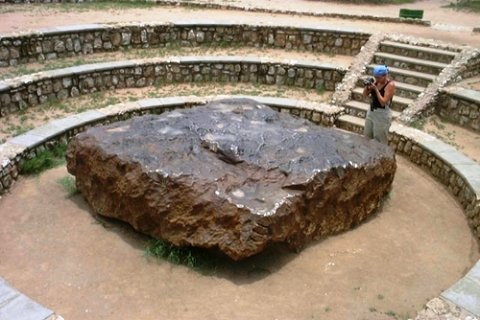 |
| Hoba meteorite. Source: Howstuffworks. |
The heaviest of the meteorites, called Hoba, was found on Earth on a farm in Namibia, Africa, and is believed to have landed on Earth more than 80,000 years ago.
Although this meteorite occupies an area of more than 6.5 square meters, its weight is estimated at 66 tons, because Hoba consists of about 84% iron and 16% nickel. It is still considered the largest natural iron block on Earth.
Contrary to its huge size, the Hoba meteorite did not leave any dents. According to the explanation of many scientists, Hoba, after going through a long journey, penetrated the Earth’s atmosphere with a very small corner.
In 1955, the Namibian government decided to designate the meteorite as a national historical site, and it has now become a popular tourist attraction.
4. Barringer crater
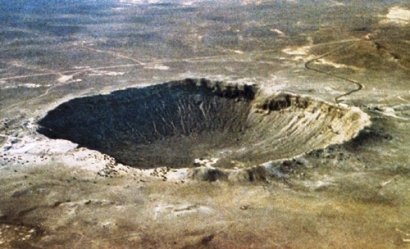 |
| Barringer crater. Source: Howstuffworks . |
A crater about 170 meters deep and about 1.6 kilometers in diameter, called Barringer Crater, is believed to have been created 50,000 years ago.This meteorite has an estimated diameter of nearly 50m, flew at a speed of about 46,000 km/h and crashed into the Arizona desert, USA, causing an estimated destructive power equivalent to 150 times the destructive power of a US atomic bomb. The US dropped it on Hiroshima.
In addition to creating the Barringer Pit, the meteorite destroyed all living things over an area of several hundred square kilometers.
5. Tunguska meteorite
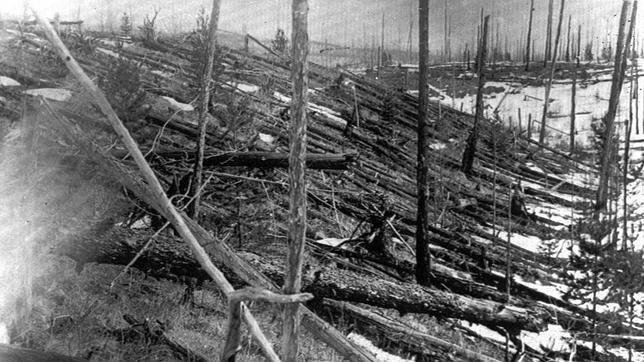 |
| Traces of meteorite destruction in Siberia (Russia) in 1908. Source: Howstuffworks. |
The last recorded major meteorite destruction on Earth occurred almost 100 years ago, in 1908, when a meteorite crashed into Earth in the Tunguska region (Russia). This event is still a hot topic of debate as it did not leave any traces of a meteorite impact. This has made it difficult for scientists to find the true origin of the meteorite.The explosion destroyed about 80 million trees over an area of 2,150 square kilometers, burning all houses and livestock within a 13-mile radius. Scientists continue to study the land within the explosion range, but no meteorite or any dents have been discovered. Many opinions hypothesize that it was an alien spaceship that created that explosion.
Minh Tran





